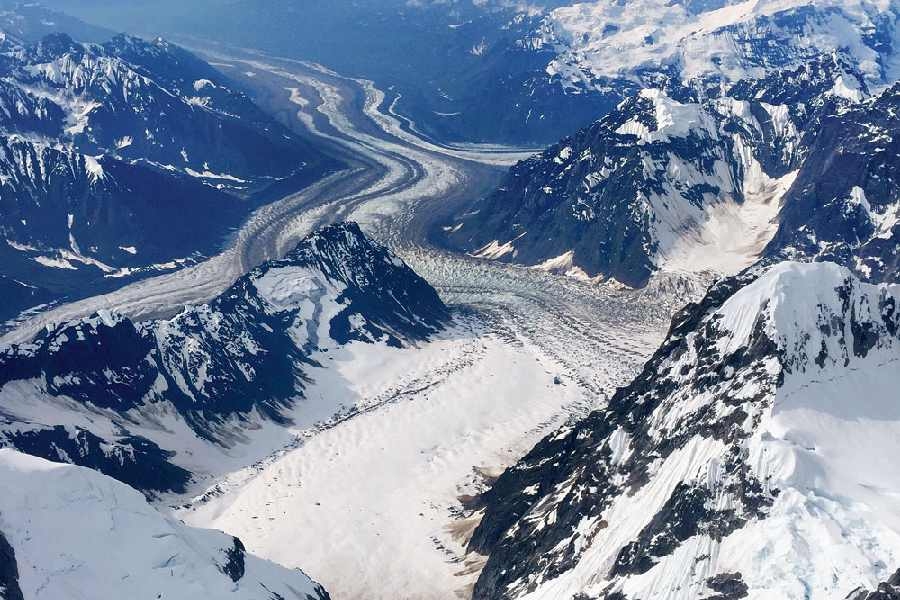Alaska’s top-heavy glaciers are approaching an irreversible tipping point
| Date :08-Jul-2024 |

By Bethan Davies :
Newcastle University
NEWCASTLE UPON TYNE,
(The Conversation)
THE MELTING of one of North America’s largest icefields has accelerated and could soon reach an irreversible tipping point. That’s the conclusion of new research colleagues and I have published on the Juneau Icefield, which straddles the Alaska-Canada border near the Alaskan capital of Juneau.
In the summer of 2022, I skied across the flat, smooth and white plateau of the icefield, accompanied by other researchers, sliding in the tracks of the person in front of me under a hot sun. From that plateau, around 40 huge, interconnected glaciers descend towards the sea, with hundreds of smaller glaciers on the mountain peaks all around.
Our work, now published in Nature Communications, has shown that Juneau is an example of a climate “feedback” in action: as temperatures are rising, less and less snow is remaining through the summer (technically: the “end-of-summer snowline” is rising). This in turn leads to ice being exposed to sunshine and higher temperatures, which means more melt, less snow, and so on.
Like many Alaskan glaciers, Juneau’s are top-heavy, with lots of ice and snow at high altitudes above the end-of-summer snowline. This previously sustained the glacier tongues lower down. But when the end-of-summer snowline does creep up to the top plateau, then suddenly a large amount of a top-heavy glacier will be newly exposed to melting.
That’s what’s happening now, each summer, and the glaciers are melting much faster than before, causing the icefield to get thinner and thinner and the plateau to get lower and lower. Once a threshold is passed, these
feedbacks can accelerate melt and drive a self-perpetuating loss of snow and ice which
would continue even if the world were to stop warming.
Ice is melting faster than ever: Using satellites, photos and old piles of rocks, we were able to measure the ice loss across Juneau Icefield from the end of the last “Little Ice Age” (about 250 years ago) to the present day. We saw that the glaciers began shrinking after that cold period ended in about 1770. This ice loss
remained constant until about 1979, when it accelerated. It accelerated again in 2010, doubling the previous rate. Glaciers there shrank five times faster between 2015 and 2019 than from 1979 to 1990.
Our data shows that as the snow decreases and the summer melt season lengthens, the icefield is darkening. Fresh, white snow is very reflective, and much of that strong solar energy that we experienced in the summer of 2022 is reflected back into space. But the end of summer snowline is rising and is now often occurring right on the plateau of the Juneau Icefield, which means that older snow and glacier ice is being exposed to the sun. These slightly darker surfaces absorb more energy, increasing snow and ice melt.